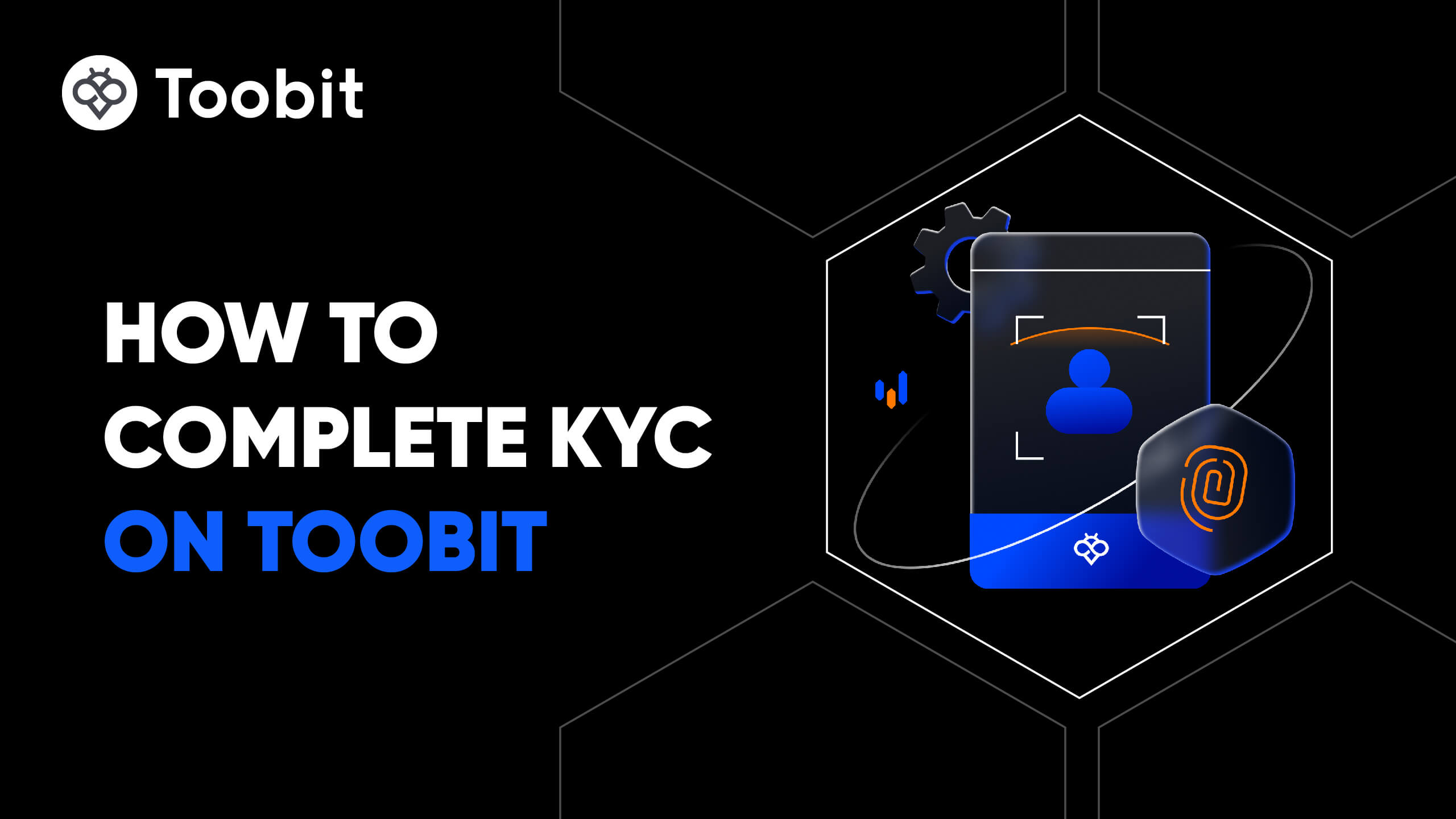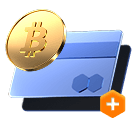Giá Beam
BEAMXThông tin thị trường Beam
Giá Beam hôm nay theo thời gian thực tại USD
1 BEAMX có giá bao nhiêu trong ?
Giới thiệu về Beam(BEAMX)
Lịch sử giá Beam
Tại sao giá của Beam luôn biến động?
Những yếu tố nào ảnh hưởng đến hiệu suất giá của Beam?
Giá Beam toàn cầu
Cách mua Beam
Tham gia Toobit ngay!
Đăng ký tài khoản Toobit bằng địa chỉ email/số điện thoại và quốc gia cư trú của bạn, đồng thời tạo mật khẩu mạnh để bảo vệ tài khoản.
Xác minh danh tính của bạn
Hoàn tất xác minh danh tính bằng cách gửi thông tin cá nhân và hình ảnh giấy tờ tùy thân hợp lệ.
Thêm phương thức thanh toán và mua Beam (BEAMX)
Thêm thẻ tín dụng/thẻ ghi nợ hoặc tài khoản ngân hàng sau khi xác minh tài khoản Toobit của bạn. Sử dụng nhiều tùy chọn thanh toán để mua Beam trên Toobit.
Giao dịch hợp đồng tương lai vĩnh viễn BEAMX
Sau khi đăng ký tài khoản trên Toobit và mua USDT hoặc token BEAMX, bạn có thể bắt đầu giao dịch các sản phẩm phái sinh, bao gồm hợp đồng tương lai BEAMX và giao dịch margin để gia tăng thu nhập.
Tham gia giao dịch sao chép BEAMX cùng Nhà giao dịch hàng đầu
Sau khi đăng ký trên Toobit và mua thành công USDT hoặc token BEAMX, bạn cũng có thể bắt đầu copy trading bằng cách theo dõi các Nhà giao dịch dẫn đầu.
Tôi có thể mua Beam ở đâu?
Mua tiền mã hóa trên ứng dụng Toobit
Đăng ký trong vài phút để mua tiền mã hóa bằng thẻ tín dụng hoặc chuyển khoản ngân hàng.
Giao dịch trên Toobit
Nạp tiền mã hóa của bạn vào Toobit và tận hưởng thanh khoản cao cùng phí giao dịch thấp.
Phần video — xác minh nhanh, giao dịch nhanh

Cách hoàn tất xác minh danh tính trên Toobit và bảo vệ bản thân khỏi gian lận
- 1.Đăng nhập vào tài khoản Toobit của bạn.
- 2.Nếu bạn là người mới sử dụng Toobit, hãy xem hướng dẫn của chúng tôi về cách tạo Tài khoản.
- 3.Nhấp vào biểu tượng Hồ sơ ở góc trên bên phải của thanh điều hướng, sau đó chọn trang Xác minh danh tính.
Câu hỏi thường gặp về BEAM
Beam là gì?
Beam (BEAM) là một nền tảng tài chính phi tập trung (DeFi) bảo mật được thiết kế để ưu tiên quyền riêng tư của người dùng trong không gian tiền điện tử. Bằng cách tận dụng các giao thức blockchain tiên tiến, Beam đảm bảo các giao dịch an toàn, riêng tư và ẩn danh cho người dùng của mình.Cách Beam đảm bảo quyền riêng tưBeam tích hợp hai giao thức sáng tạo:LelantusMW:Cung cấp tính ẩn danh nâng cao cho các giao dịch bằng cách che giấu số lượng và người tham gia.Mimblewimble:Giảm thiểu dữ liệu giao dịch được lưu trữ trên blockchain, bảo vệ thêm danh tính và số dư của người dùng.Cách tiếp cận giao thức kép này đảm bảo rằng địa chỉ, số dư và danh tính người dùng luôn được giữ bí mật.Cách mua BEAM
Để mua BEAM, bạn có thể làm theo các bước chung sau:1. Chọn một sàn giao dịch tiền điện tử và Tạo tài khoảnBắt đầu bằng cách chọn một nền tảng tiền điện tử uy tín và đáng tin cậy hỗ trợ giao dịch BEAM. Bạn cũng có thể mua BEAM tại Toobit. Đăng ký.2. Hoàn tất xác minh (Không bắt buộc):Đọc hướng dẫn Cách hoàn tất xác minh trên Toobit của chúng tôi để biết thêm thông tin.3. Nạp tiền:Nạp tiền vào tài khoản Toobit của bạn. Điều này có thể được thực hiện qua thẻ tín dụng/thẻ ghi nợ hoặc ví tiền điện tử của bạn.4. Điều hướng đến BEAM:Khi tài khoản của bạn đã được nạp tiền, điều hướng đến phần Thị trường của nền tảng.5. Mua BEAM:Tìm BEAM trong danh sách các loại tiền điện tử có sẵn.Đặt lệnh mua. Đọc hướng dẫn Cách mua tiền điện tử trên Toobit của chúng tôi để biết thêm thông tin.Làm thế nào để bán BEAM?
Bạn có thể bán BEAM lấy USDT tại đây trên Toobit. Đọc hướng dẫn của chúng tôi về Cách giao dịch Spot trên Toobit để biết thêm thông tin.Giá BEAM hiện tại là bao nhiêu?
Bạn đang tìm kiếm giá BEAM? Giá BEAM trực tiếp được cập nhật theo thời gian thực trên Toobit.Cách rút BEAM trên Toobit?
Bạn có thể rút BEAM và các token tiền điện tử khác thành USDT tại đây trên Toobit. Đọc hướng dẫn Cách rút tiền điện tử trên Toobit của chúng tôi để biết thêm thông tin.Beam hoạt động như thế nào?
Beam sử dụng thuật toán bằng chứng công việc Equihash, được chọn vì khả năng xử lý khối lượng lớn dữ liệu một cách hiệu quả. Thuật toán này đóng vai trò quan trọng trong việc bảo mật mạng Beam và duy trì tính toàn vẹn của nó. Nền tảng hỗ trợ các loại giao dịch tùy chỉnh khác nhau, bao gồm ký quỹ, hoán đổi nguyên tử và giao dịch khóa thời gian, đáp ứng nhu cầu đa dạng của người dùng.Được hỗ trợ bởi giao thức Mimblewimble, Beam đảm bảo tính bảo mật hoàn toàn cho tất cả các giao dịch mạng, ưu tiên quyền riêng tư và an ninh. Ngoài ra, Máy ảo Beam tạo điều kiện cho việc tạo ra các ứng dụng phi tập trung bảo mật (dApps) thông qua thực thi WASM. Kiến trúc sáng tạo của nó có các Contract Shaders, quản lý logic kinh doanh, và App Shaders, xử lý các lớp trình bày để tích hợp ví liền mạch.Với những tính năng tiên tiến này, Beam nổi bật như một nền tảng blockchain mạnh mẽ, tập trung vào quyền riêng tư.Các trường hợp sử dụng tiềm năng của Beam là gì?
Beam được thiết kế để cung cấp một nền tảng blockchain an toàn, ổn định và đáng tin cậy, giải quyết các thách thức về quản lý sai dữ liệu người dùng. Nền tảng này hỗ trợ stablecoin riêng tư, NFT, nhà tạo lập thị trường tự động (AMM) và các đổi mới trong tương lai như giao thức cho vay, oracle, sidechain và tài sản được bao bọc.Blockchain của Beam cho phép tạo, giao dịch và buôn bán tài sản, với các giao dịch tài sản được tích hợp liền mạch và không thể phân biệt với các giao dịch Beam thông thường, đảm bảo quyền riêng tư được nâng cao. Ngoài ra, Máy ảo Beam (BVM) cho phép các nhà phát triển xây dựng các ứng dụng phi tập trung bảo mật (dApp) trong khi duy trì mức độ bảo mật cao.Beam cũng hỗ trợ một AMM giống như Uniswap cho các token Beam, cũng như Tài sản Bảo mật và Tài sản Cầu nối, cung cấp cho người dùng các tùy chọn giao dịch phi tập trung hiệu quả và tập trung vào quyền riêng tư. Với bộ tính năng mạnh mẽ của mình, Beam tiếp tục đẩy giới hạn của đổi mới blockchain an toàn.Lịch sử của Beam là gì?
Beam, một nền tảng blockchain tập trung vào quyền riêng tư, được ra mắt vào tháng 3 năm 2018 bởi một đội ngũ giàu kinh nghiệm bao gồm Alexander Zaidelson, Alex Romanov và Amir Aaronson.Alexander Zaidelson, CEO của Beam, bắt đầu sự nghiệp của mình như một nhà phát triển phần mềm và là người sáng lập Nareos, một công ty chia sẻ tệp ngang hàng.Alex Romanov, CTO, có kinh nghiệm rộng rãi trong việc quản lý các đội ngũ lớn và giám sát các dự án phức tạp.Amir Aaronson, COO, đã đồng sáng lập nhiều công ty công nghệ, thể hiện chuyên môn của mình trong hoạt động kinh doanh.Mainnet của Beam chính thức ra mắt vào ngày 3 tháng 1 năm 2019, đánh dấu một bước quan trọng trong việc nâng cao quyền riêng tư trong ngành công nghiệp tiền điện tử. Nền tảng này được phát triển để đáp ứng nhu cầu ngày càng tăng về các giao dịch riêng tư, khi các tiến bộ trong phân tích blockchain cho thấy rằng các giao dịch tiền điện tử truyền thống thường có thể bị truy ngược lại người gửi. Beam giải quyết thách thức này bằng cách ưu tiên quyền riêng tư của người dùng và bảo mật giao dịch.Các chỉ báo dự đoán giá BEAM
Các đường trung bình động là một trong những công cụ được sử dụng rộng rãi nhất để dự đoán giá BEAM. Những chỉ báo này cung cấp giá đóng cửa trung bình của BEAM trong một khung thời gian xác định, chia thành các khoảng thời gian bằng nhau. Ví dụ, Đường trung bình động đơn giản (SMA) 12 ngày tính tổng giá đóng cửa của BEAM trong 12 ngày qua và chia cho 12.Ngoài SMA, các nhà giao dịch thường dựa vào Đường trung bình động hàm mũ (EMA). Không giống như SMA, EMA đặt trọng tâm lớn hơn vào dữ liệu giá gần đây, cho phép nó phản ứng nhanh hơn với các thay đổi giá, làm cho nó trở thành một công cụ có giá trị để xác định xu hướng ngắn hạn.Các đường trung bình động thường được sử dụng trong thị trường tiền điện tử bao gồm các đường trung bình 50 ngày, 100 ngày và 200 ngày. Những chỉ báo này rất quan trọng trong việc xác định các mức hỗ trợ và kháng cự chính:Khi giá của BEAM di chuyển trên một đường trung bình động quan trọng, nó thường được hiểu là một tín hiệu tăng giá.Ngược lại, sự giảm xuống dưới các mức này thường chỉ ra sự yếu kém của thị trường.Ngoài các đường trung bình động, các nhà giao dịch thường sử dụng các công cụ khác như Chỉ số sức mạnh tương đối (RSI) và các mức thoái lui Fibonacci để dự báo các biến động giá tiềm năng của BEAM và đánh giá xu hướng thị trường.Cách đọc biểu đồ BEAM và dự đoán biến động giá?
Biểu đồ nến là công cụ ưa thích của các nhà giao dịch khi phân tích biến động giá của BEAM, vì chúng cung cấp cái nhìn chi tiết hơn so với biểu đồ đường đơn giản. Những biểu đồ này cho phép người dùng xem hành động giá của BEAM với nhiều mức độ chi tiết khác nhau, từ khoảng thời gian 5 phút cho phân tích ngắn hạn đến biểu đồ hàng tuần để xác định xu hướng dài hạn. Các khung thời gian phổ biến bao gồm biểu đồ nến 1 giờ, 4 giờ và 1 ngày, phục vụ cho các chiến lược giao dịch khác nhau.Ví dụ, biểu đồ nến 1 giờ chia hành động giá của BEAM thành các khoảng thời gian 1 giờ, cung cấp dữ liệu quan trọng như:Giá mở cửaGiá đóng cửaGiá cao nhất và thấp nhất trong khoảng thời gian 1 giờMàu sắc của mỗi cây nến cũng rất quan trọng:Nến xanh cho thấy giá đóng cửa cao hơn giá mở cửa, báo hiệu động lực tăng.Nến đỏ cho thấy giá đóng cửa thấp hơn giá mở cửa, chỉ ra xu hướng giảm.Trong một số biểu đồ, thân nến rỗng hoặc đầy có thể được sử dụng thay vì màu sắc để biểu thị biến động giá. Bằng cách hiểu những tín hiệu hình ảnh này, các nhà giao dịch có thể diễn giải tốt hơn xu hướng thị trường của BEAM và đưa ra quyết định sáng suốt hơn.Những yếu tố nào ảnh hưởng đến giá của BEAM?
Giá của BEAM, giống như bất kỳ tài sản nào khác, chủ yếu bị ảnh hưởng bởi động lực cung và cầu. Những yếu tố này có thể bị tác động bởi các sự kiện cơ bản khác nhau, bao gồm:Giảm phần thưởng khốiHard forksCập nhật giao thứcCác yếu tố bên ngoài như thay đổi quy định, sự chấp nhận của doanh nghiệp và chính phủ, vi phạm an ninh của sàn giao dịch tiền điện tử và các sự kiện thực tế khác cũng có thể ảnh hưởng đáng kể đến giá của BEAM. Do những biến số này, vốn hóa thị trường của BEAM có thể trải qua những biến động nhanh chóng và đáng kể.Để đưa ra dự đoán giá BEAM chính xác, nhiều nhà giao dịch theo dõi hoạt động của các cá voi BEAM—các tổ chức hoặc cá nhân nắm giữ lượng lớn BEAM. Do quy mô tương đối nhỏ của thị trường tiền điện tử so với thị trường tài chính truyền thống, hành động của những cá voi này có thể có tác động không cân xứng đến biến động giá của BEAM, gây ra sự biến động đáng kể.Việc cập nhật thông tin về cả các yếu tố kinh tế vĩ mô và hoạt động của cá voi là rất quan trọng đối với các nhà giao dịch muốn điều hướng thị trường năng động của BEAM.


